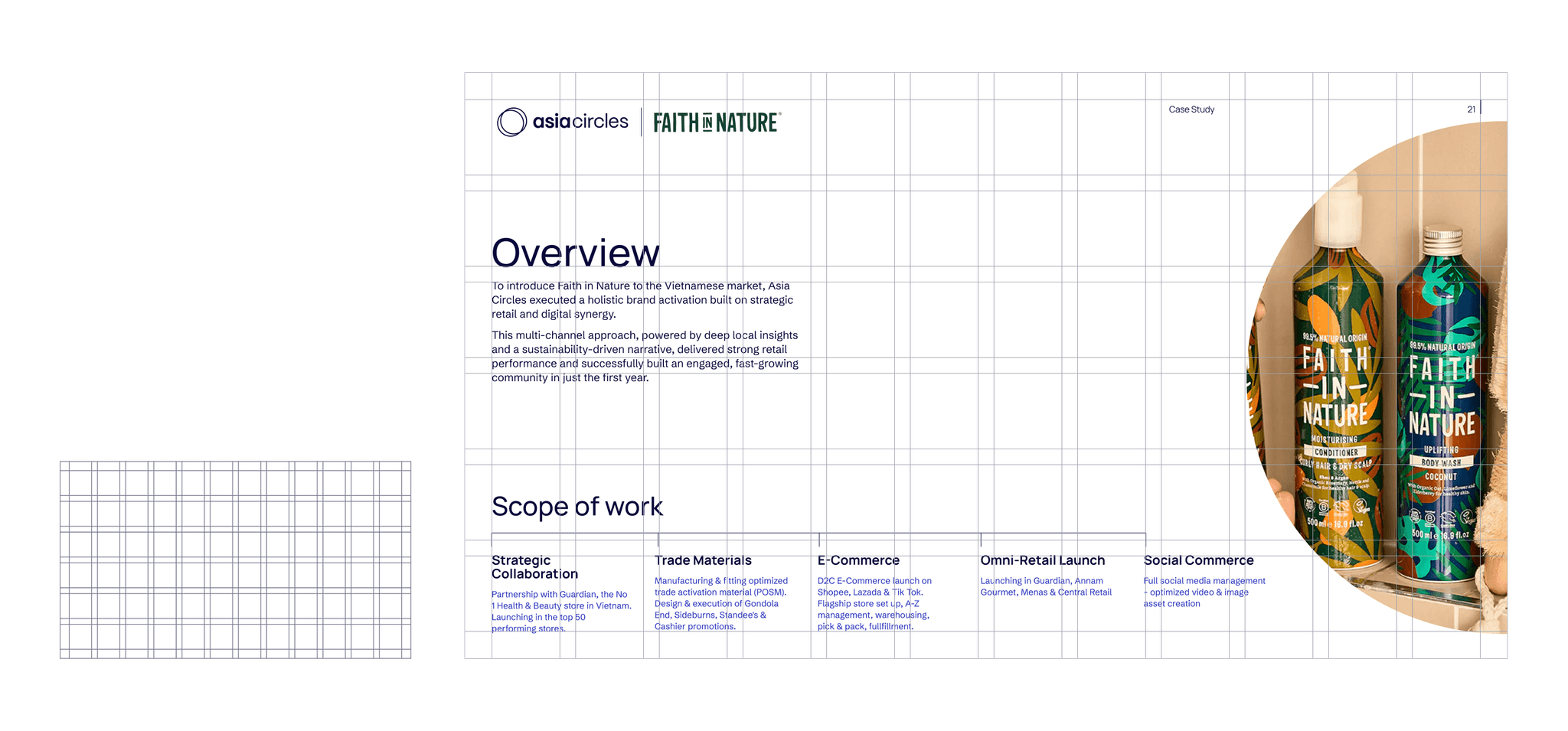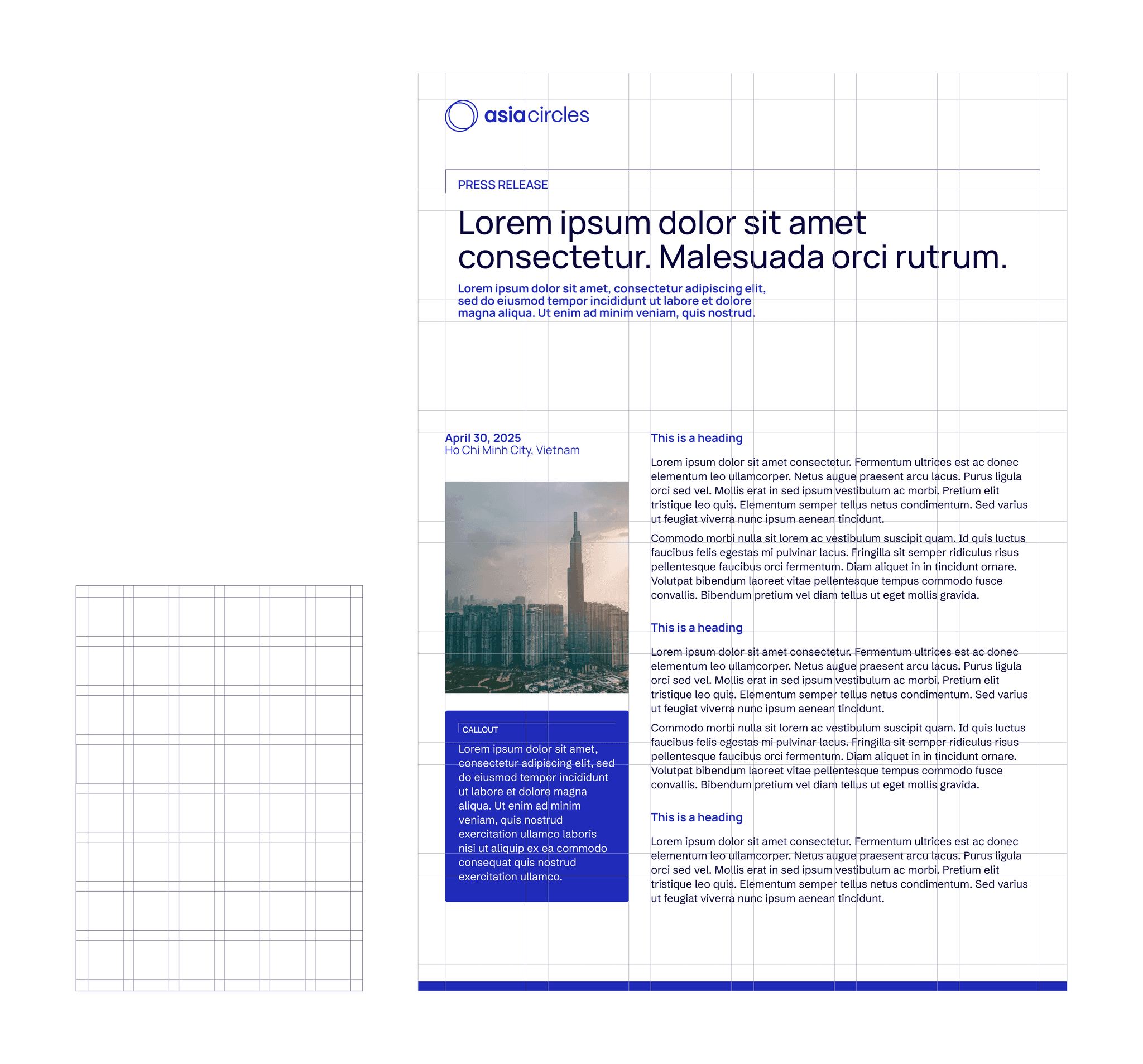Grid system
Why do we need it
The grid system is the silent framework behind powerful design. It provides consistency, structure, and clarity, essential qualities for any brand that wants to communicate confidently and cohesively.
Visual harmony & balance
A grid brings rhythm, balance, and clarity to design. It aligns elements with intention, creating visual harmony that makes layouts easier to navigate and more aesthetically consistent. By guiding the viewer’s eye and reinforcing hierarchy, the grid ensures that key messages are always clear, bringing order to complexity and structure to creativity.
Consistency across touchpoints
The grid system ensures a unified design language that remains consistent across platforms, formats, and media. When communicating with diverse audiences, this consistency is essential in anchoring every touchpoint in a clear, recognizable structure that builds trust, reinforces brand recognition, and elevates professionalism.
Creative flexibility within structure
The grid provides a reliable framework that allows designers to explore, adapt, and push creative boundaries with confidence. It ensures that even the most experimental layouts remain cohesive and intentional. This balance between structure and freedom is key to maintaining brand integrity while staying visually fresh and dynamic.
Scalable, strategic system
The grid system offers a scalable design framework that can flex and grow with the brand. As the business expands into new markets or launches new initiatives, the grid ensures that visual integrity is maintained, no matter the format, language, or context. It allows designers and partners to build upon a shared foundation, making it easier to replicate, adapt, and localize designs without starting from scratch.
The grid in composition
The grid in a composition should be built around the established hierarchy. It should allow for relationships to be created throughout the composition and for information to be clear and digestible. When creating a composition:
Consider the content
Understand the nature of the information: What is it about? How should it be grouped or divided?
Define the relationships
Establish how different elements relate to one another, visually and conceptually.
Support the communication
Use the grid to guide the viewer’s eye, emphasize key messages, and make the narrative seamless and accessible as well as deliver the correct tone of voice.
Presentation grid

Social media grid
Square post
Portrait post
A4 grid

